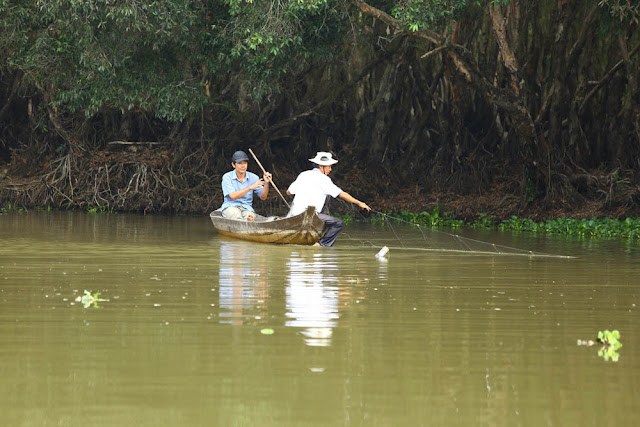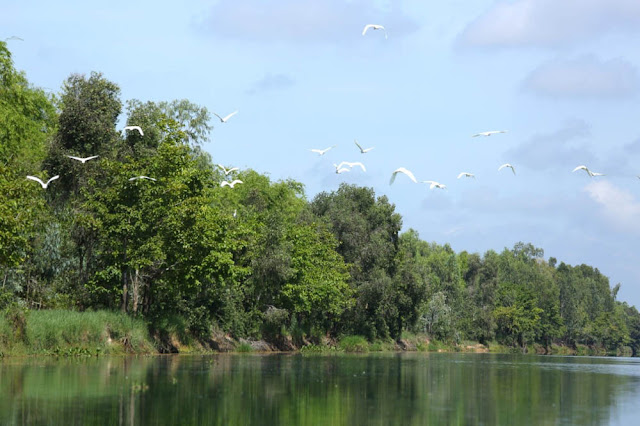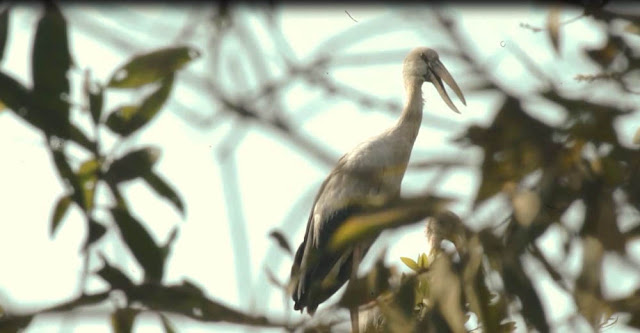In Cambodia, it is easy to encounter pretty belles performing Robam Tep Apsara (Dance of the Apsara Divinities) at ancient temples and magnificent palaces or beside rivers.
Apsaras were fairies of cloud and water present in Cambodian folk tales, Hindu and Buddhist mythology. When they frolicked, sang and danced, vegetation and animals multiplied. Therefore, Cambodian people honored Apsaras as Prosperous Goddesses. The most beautiful farriers were Uvasi, Menaka, Ramba and Tilotama, who frequently appeared in Khmer works of poems, music and paintings. The fairies were also the owners of palaces (as they were wives of the Gandharvas, a heaven beings) and specialized in singing and dancing to serve Gods in victory feasts against ghosts and devils. There would be 26 fairies singing and dancing together on every banquet.
Relying on dancing movements of the fairies, Cambodian people created the fairy dance – Robam Tep Apsara to perform on festivals that extolled merits of Gods, Goddesses and Royalty. The dance, which has existed for many years, became the imperial dance. Then now it is into the familiar dance of belles on festivals, gauds and weddings.
Apsara is a classical dance, mild and famous for its elegance and grandeur with gentle postures and gestures. So far Apsara is the national heritage and the spirit of Cambodia. The people who had the greatest merit in conserving and developing Apsara are the Queen Sisowath Kossamak and Princess Norodom Buppha Devi. In the 1940s, Queen Sisowath Kossamak re-created the ancient Apsara dance by educating her first grand daughter, Princess Norodom Bopha Devi, to become an Apsara dancer. Since 8 years old, the prince carried out Apsara dance in the Royal Palace. Later, she brought this fairy dance over the frontier and introduce it to the entire world.
Born in at least 2,000 years ago, the first images of the dance have still been seen on many decorative embossments, citadels and moats over hundreds of meters long in Cambodian ancient temples such as Complex of Angkor as well as many other religious constructions throughout the country.
Postures and curves of the dancer’s arm and body as well as the dancing costume made of gold, silver, jewels, pearls with designs of flowers and leaves were originated from pictures in the old temples, which depicted Indian epic poetry Ramayana or the fight of scrambling for the holy water vase between Demons and Gods that the dance about it includes 100 appealing and meaningful gestures.
 |
| Photo by Anders Jiras |
By the dance, Cambodian residents wanted to voice their wishes about a peaceful, thriving life, praised the beauty of nature, country, deities and contribution of the ancestors. Besides, the dance also reflects stories about birth, aging, sickness and death - the four periods every person has to overcome - so as that next generations can understand thoroughly, experience in observing and preserving great cultural and mental values of the nation.
Annually, thanks to the patronage of the royalty, the Apsara artists can go on tour everywhere. In order to maintaining and enhancing this traditional dance, steadily there are art groups coming to schools to select small girls for educating, especially orphaned and poor ones. Girls at the age of 8 to 9 years will learn to dance and practice at school and the palace. They drills numerous attractive postures, particularly dancing acts with extraordinarily flexible hands that fingers can bow behind very close to wrist, legs can kick highly and knees can bend behind to the back. In every afternoon, the girls again sing, dance and frolic at temples in front of Apsara embossments, appealing to many travelers to admire.
Today, apart from dancers serving Royalty, there are 300 dancers performing in hotels, restaurants and Chaktomuk Theatre near the Imperial Palace in pulsating melodies with brilliant and graceful costumes.












